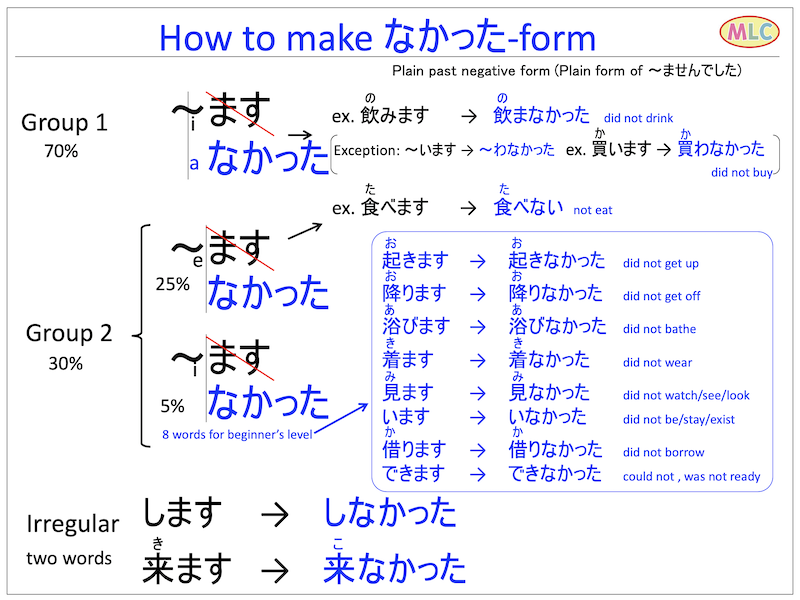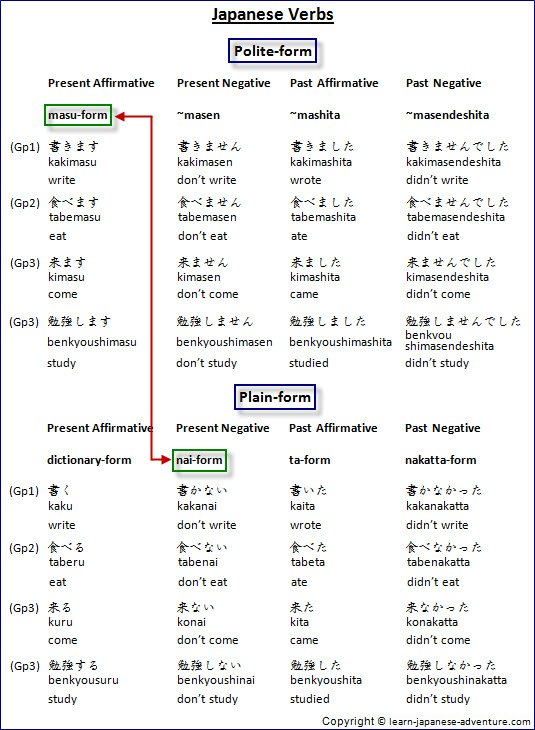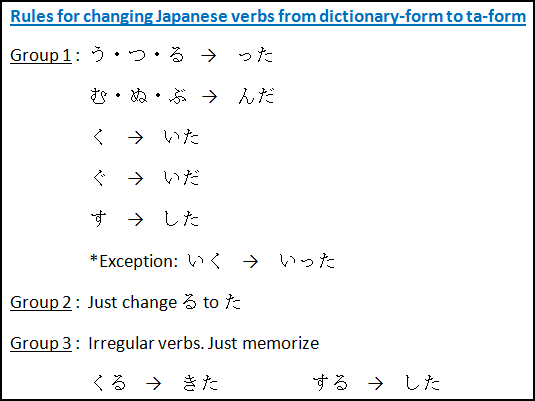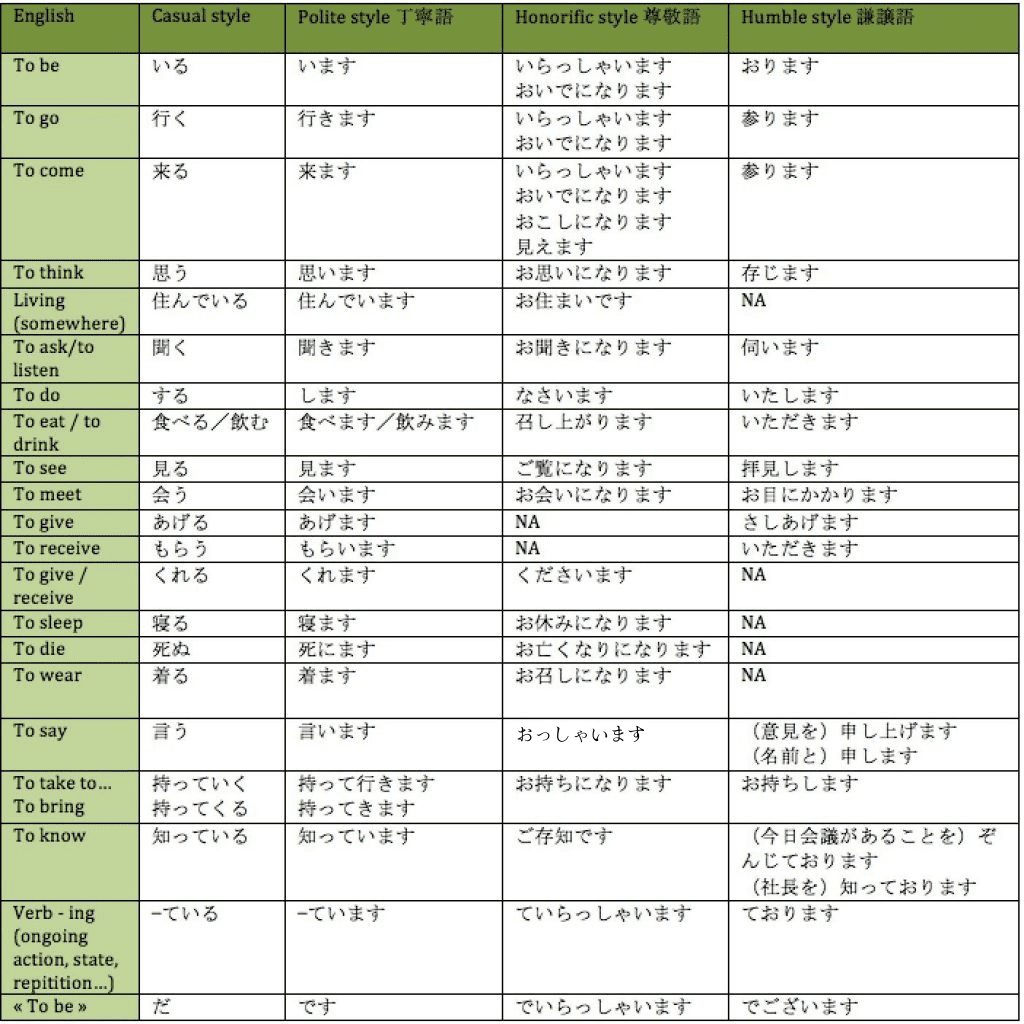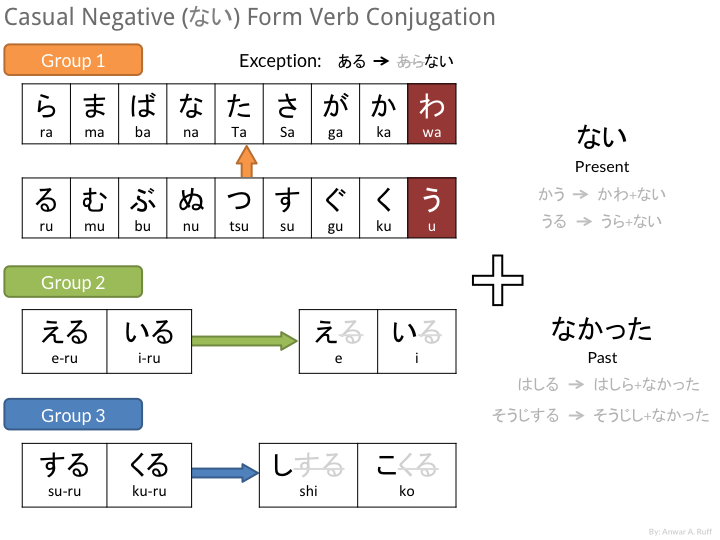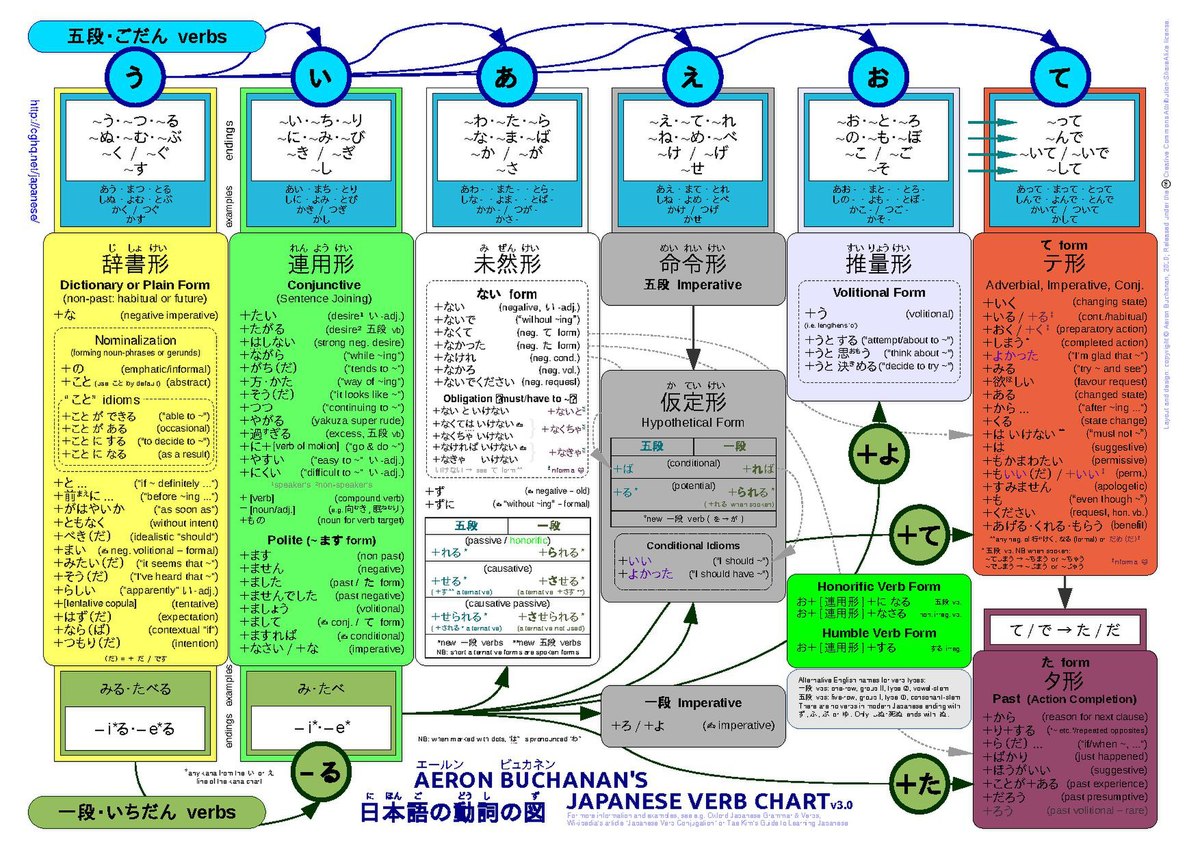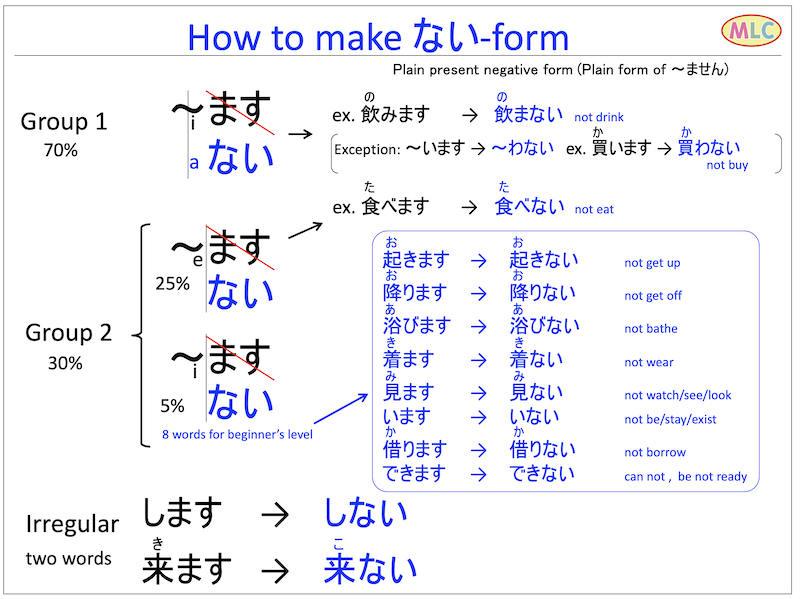
verb plain forms (dictionary form, nai-form, ta-form, nakatta-form) | MLC Japanese Language School in Tokyo

Japanese Language - MLC - How to make verb volitional form Volitional form (意向形 いこうけい)は「〜ましょう」 のplain form (casual)です。 Download Free worksheet → https://goo.gl/AkLHdv #japanese #japaneselanguage #pdf #download #jlpt #n4 #n3 ...
